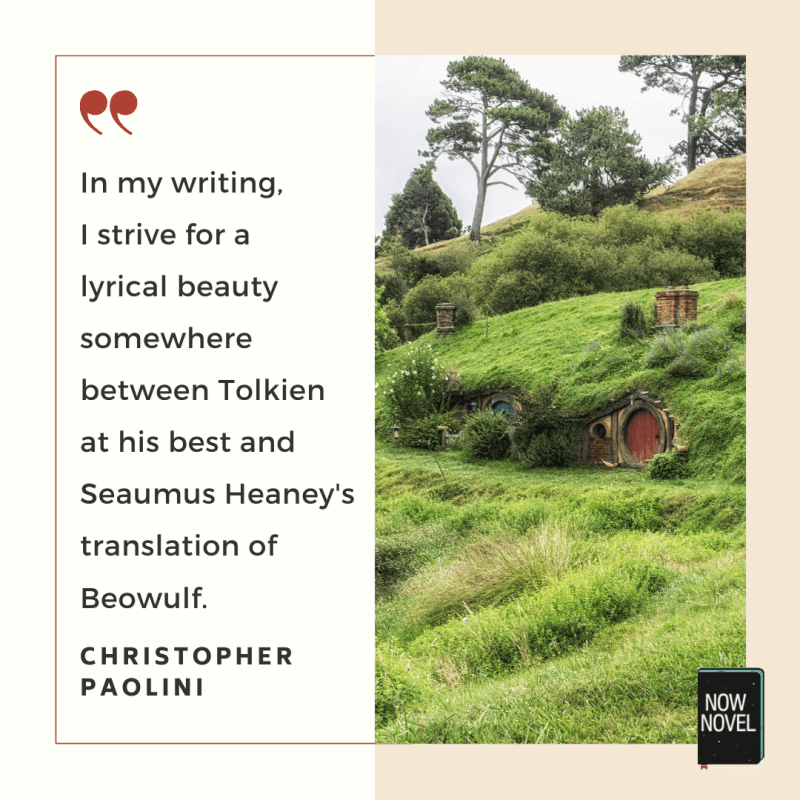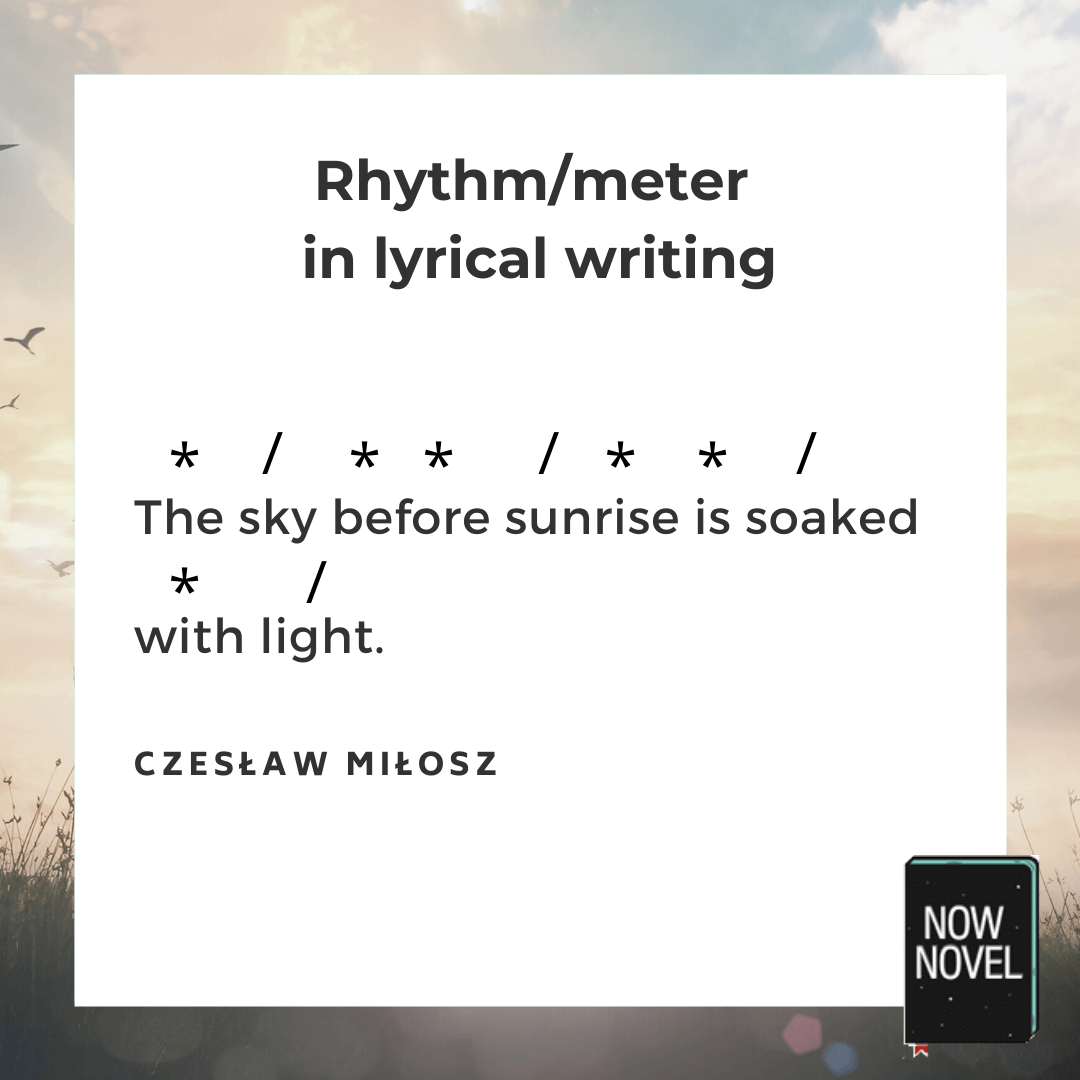Lyrical writing is writing that is song-like, poetic, or deeply evocative. Below we have 5 simple tips to write in a more lyrical style.
First, though, let's define the lyrical style of writing. We've all read books in which the writing can be simply described as beautiful. The writing flows, the descriptions are gorgeous, it's like reading poetry or listening to melodious music. It's writing that you take pleasure in as a reader, adding as much to the enjoyment of the book as good plot, believable characterisation and atmospheric setting. It's writing that draws you in, using poetic language, and stays with you long after you've read the book. Some describe it as a poetic prose, and lyrical writing can include variations in sentence length, as well as the use of repetition, such as alliteration (repeated consonant sounds in multiple words) and assonance (repeated vowel sounds), as well as other figurative language, for example. All of which are found in various poetic forms, including lyric poetry.
What it isn't, of course, is purple prose. It's descriptive writing that's overblown, metaphor piled on top of metaphor, too much description that is so plentiful you can't actually picture what the writer is describing.
1. Think about the sound of each sentence
A paragraph is often lyrical because of the patterns made by elements such as:
- Rhythm: the pattern formed between words' syllables and stresses (which syllables we emphasize in speech)
- Cadence: (the rising and falling of speech patterns - this is even more so for tonal languages where pitch of a word partially determines its meaning)
- Sentence length: The larger structures of how words and images are grouped add to the overall musical quality of a writer's prose
Two poetic devices relating to the sounds words make as we read them aloud are assonance and alliteration.
'Assonance' refers to the patterns and repetitions of vowels. For example, if a departing character were to say, when asked if they're leaving the next day:
"Aye, away again, early at daybreak."
The repetition of the long 'a' sound has a slightly plaintive quality.
Similarly, 'alliteration' refers to the pattern made by consonants.
For example, in the famous war poem 'Anthem for Doomed Youth' by Wilfred Owen, the alliteration of plosive 't' and 'p' sounds in the description of gunfire mimics the hail of bullets:
Only the stuttering rifles' rapid rattle
Wilfred Owen, 'Anthem for Doomed Youth', available here.
Can patter out their hasty orisons.
Lyrical writing makes use of elements such as these in a way that is expressive, pleasing to our ears.
2. Take notes on lyrical prose and poetry
Read examples of lyrical writing in both novels and poems and write out sentences that strike you as particularly lyrical.
Take for example this poem by Polish poet Czesław Miłosz, 'At Dawn':
How enduring, how we need durability.
Czesław Miłosz, 'At Dawn' (translated by Czesław Miłosz and Robert Hass)
The sky before sunrise is soaked with light.
Rosy colour tints buildings, bridges, and the Seine.
I was here when she, with whom I walk, wasn't born yet
And the cities on a distant plain stood intact
Before they rose in the air with the dust of sepulchral brick
And the people who lived there didn't know.
Only this moment at dawn is real to me.
The bygone lives are like my own past life, uncertain.
I cast a spell on a city asking it to last.
What gives the poem its nostalgic and lyrical qualities, besides subject matter (a walk with someone at sunrise)?
- Sound quality: Miłosz uses alliteration such as the soft sibilant 's' repeated in 'The sky before sunrise is soaked with light'
- Strong and evocative visuals: Miłosz uses words like a paintbrush - we see the 'rosy colour' that 'tints' buildings
- Emotional use of time: The various 'befores' and 'afters' of the poem create some of the lyrical quality - for example the poignant idea of a destroyed city's dust rising in the air

3. Use strong visuals
Many lyrical pieces of music conjure visual images. For example the French impressionist composer Claude Debussy's piano piece 'Poissons d'Or' ('Golden Fish') evokes the darting and shimmering of fish in its trills and swift changes in mood and rhythm.
Many authors create lyrical effects like Debussy, by creating subtle or overt shifts of tone, phrase, and cadence as sentences build.
Consider the lyricism and visual strength of this description of a forest in Anne Michaels' Fugitive Pieces:
The forest floor is speckled bronze, sugar caramelized in the leaves. The branches look painted onto the onion-white sky. One morning I watch a finger of light move its way deliberately to me across the ground.
Anne Michaels, Fugitive Pieces (1997), p. 12
Michaels strongly evokes the senses. The lyrical description of the colours in the forest floor give way to the mysterious 'finger of light'.
The lyrical effect is amplified by:
- Specificity: Each object has a particular colour, texture. The forest floor is 'speckled' bronze and we can almost hear the crunch of leaves underfoot in 'sugar caramelized'
- Flow: The long sentences flow in satisfying cadences of assonance and alliteration (the succession soft 'f' and 'sh' sounds of the first sentence, for example evoke a sense of quiet undergrowth)
4. Show what narrators see with emotion
Lyrical writing is descriptive, in the same way a 'tone poem' (a piece of music meant to evoke a scene or image, like 'Poissons D'or') is descriptive.
Lyrical writing doesn't tell us, 'This story is about golden fish'. Like Debussy's piece, it shows us something (such as the movement of a fish through water).
Lyrical writing may give us good subtext about what a character is feeling, in the details they observe.
For example, an elated character cresting a hill on a tough 5-day hike might say:
And at last, we were there - the summit beneath our feet and the valley's aquamarines, deep greens and chalky grays scaled down into a hushed and sunlit miniature far below.
Here the use of time ('at last') and the sense of space and separation and note of triumph ('we were there') together create the a scene that suggests the triumphant feeling and the pleasure of a new perspective for the hiker.
5. Find lyrical sentences' meter or rhythm
When you're aiming for a lyrical writing quality, making a diagram of a sentence's rhythm is a useful way to focus on how each word contributes.
Take a line from the Czesław Miłosz poem above, for example:
The sky before sunrise is soaked with light.
If you were to draw an asterisk above every unstressed (not emphasized) syllable and a forward slash above every stressed (emphasized) syllable, you'd have the pattern:

Say this pattern of stressed/unstressed syllables (in poetry we call this 'meter') aloud. Use an abstract sound, e.g. 'Ta':
'Ta | TA ta ta | TA ta ta | TA ta | Ta'.
From writing the sentence's meter this way we can see it has a pleasing symmetry - two triplets of 'long, short, short' with a shorter pattern on either side.
This is also where sentence structure is important, too. Try to vary the length of sentences, having a pleasing mix of long and short sentences. Short, punchy sentences can convey danger or breathlessness, or a series of facts. Long sentences are more languid, and liquid.
Need feedback on style and other elements of your manuscript? Get an obligation-free quote for professional editing now.









Thank you for this article. I write contemporary romance. I have always written in a lyrical style. But I did not know that is was a thing. I thought it was just me writing in my own goofy style. Most of my fellow writers think my writing is old fashioned. They try to get me to write in the minimalist style like them. So, when I read your article I felt so validate. I wanted to send them this article and let them know that writing in a lyrical style is a real thing and I do it quite well.
Karron Kennedy - About 4 years ago
Hi Karron, it's a pleasure! I'm glad to hear this article felt validating of your stylistic choices. Thank you for reading our blog.
Jordan - About 4 years ago